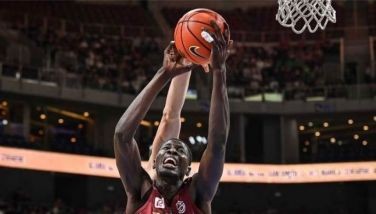The BRT and the PUVM – Part 2
Two weeks ago, this corner wrote about “The BRT and the PUVM,” dealing with the apparent aftereffect of the upcoming start of the Cebu BRT rollout. The news item the other day indicated the issue already arose sooner than I expected. That it will arise should have been expected, and in fact, should have already been addressed beforehand. Part of the seeming dysfunction here seems to be a disconnect between the national and local governments.
The Public Utility Vehicle Modernization (PUVM) Program was created to transform the road sector of public transport through the introduction of safer and climate-friendly vehicles, improved regulation, and industry consolidation. The Bus Rapid Transit (BRT) fits exactly towards that goal and should have been the pioneering example on how to roll that out. Unfortunately, it’s more often than not that the government has its left hand not knowing what the right is doing. And so, we miss the golden opportunity to do that and maximize the benefit.
PUVM implementors and advocates may not see clearly the parallel between the BRT and the PUVM because oftentimes we look at things with defined templates in mind. And so, when we think of PUVM, we imagine the newly design “modern” jeepneys we see in the news. But “modern” PUVs need not look nor operate strictly like those we see in the newspapers or imprinted in our mind. If we examine the BRT, both the vehicle and its operations, it clearly exhibits all the advantages offered by the typical “modern PUV”. Plus more. After all, a bus is a public utility vehicle (PUV) too, although it's more often designated as a PUB.
Here's where the Federation of Cebu Transport Cooperatives (FCTC) may need to have a mindset transformation --why not offer to operate the BRT? The only difference between the jeepney and the BRT is the capacity and maybe mode of operations --everything else in its operations is merely the same. In fact, I think the best people to run the BRT should be the jeepney people themselves --there’s very little more to learn. The BRT is new (to the Philippines, at least) and the best people to learn it quickly are those who are in the same business.
There might be a few adjustments, or rather improvements. The BRT is run as a system, not a free-for-all/one-fights-all scrambling to get passengers on the road. Thus, there will be fixed routes and fixed schedules, and not PUJs racing after each other to fight for passengers (or passengers fighting for jeepney seats). Operations will be orderly, systematic, and scheduled; workers incomes would be “fixed” like those working in offices…no more scrambling on the streets.
The ball is now on the court of the PUJ regime. They can see this as an end of the industry, or as the beginning of a new, much, much better one. The one who rises up early will catch more fish. We’re in a new day and it should be better for everybody, even more for those in the public transport industry. Opportunity instead of obstacles. This is where everybody should be happy --no one should be left behind.
- Latest
























